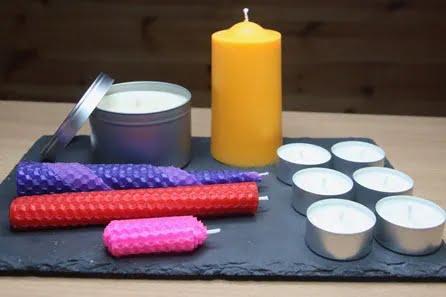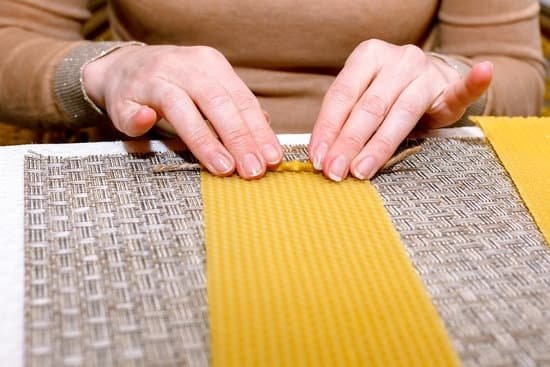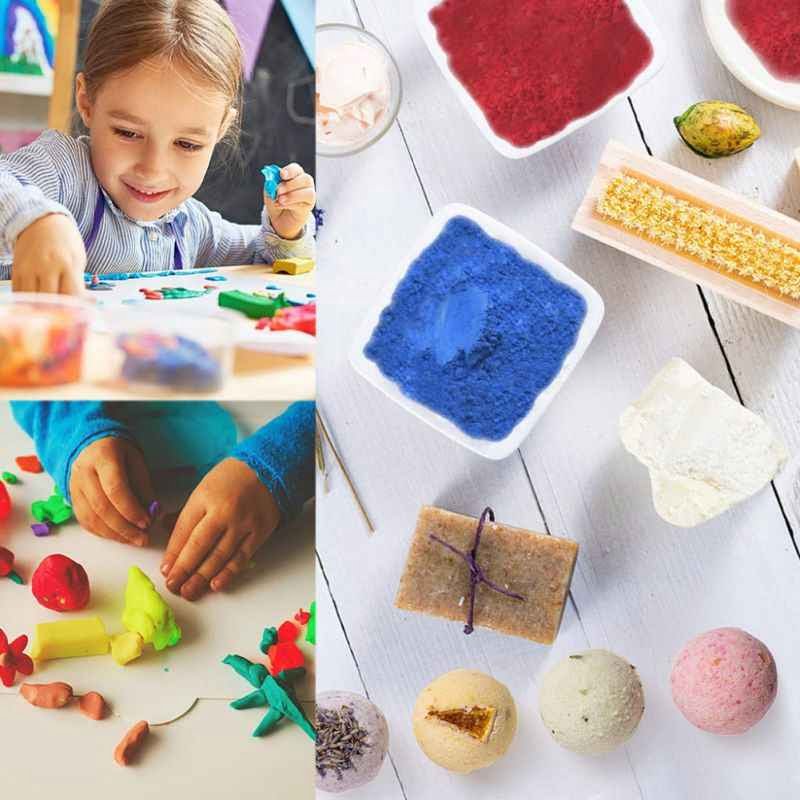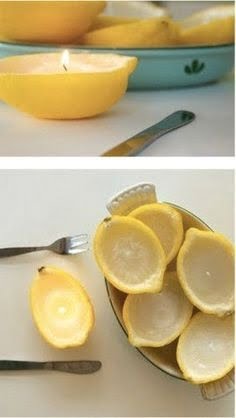The art of candle making has been practiced for centuries, with its origins dating back to ancient civilizations. What was once a necessity for lighting and heat has now become a popular craft and hobby. The process of creating candles has evolved over time, but one thing remains constant: the importance of using high-quality raw materials.
In candle making, the choice of raw materials greatly impacts the final product. The right combination of waxes, wicks, fragrance oils, dyes or colorants, containers or molds, tools and equipment can transform a simple candle into a work of art. Each raw material serves a specific purpose and contributes to the overall quality, appearance, scent, and performance of the finished candle.
Waxes form the foundation of candle making and are available in various types such as soy wax, beeswax, and paraffin. Different waxes possess unique properties that affect characteristics like burn time, scent throw, color retention, and eco-friendliness. Wick selection is equally vital as it determines an even burn and proper ignition. From cotton to wood to zinc-core wicks, there are options suitable for different candle sizes and styles.
As aspiring candle makers delve into this craft, they will also discover the role that fragrance oils play in creating delightful scents. Whether it’s essential oils derived from plants or synthetic oils crafted in laboratories to mimic natural aromas, fragrance oils allow artisans to add their personal touch through captivating fragrances. Alongside scents come vibrant colors infused into candles through dyes or colorants. Liquid dyes, dye chips or powder forms offer versatility in achieving desired hues.
Candle makers must also pay attention to choosing suitable containers or molds that complement their designs while providing functionality. Whether it’s glass jars for elegant aesthetics or silicone molds for intricate shapes, there are options to suit every preference. Additionally, acquiring essential tools and equipment ensures efficiency throughout the candle making process.
Before embarking on this creative journey, it is crucial to understand and follow safety precautions. Proper ventilation, handling of hot wax, and fire prevention techniques are essential to ensure a hazard-free experience. Troubleshooting common issues that may arise during candle making is also an important skillset to acquire.
Waxes
Waxes form the foundation of candle making, providing the substance that allows candles to burn and emit light. There are several types of waxes commonly used in candle making, each with its own unique properties and benefits.
1. Soy Wax: Derived from soybean oil, soy wax is popular among environmentally-conscious candle makers due to its renewable and sustainable nature. It burns slowly, allowing for a longer-lasting candle, and has a low melting point, which makes it easy to work with.
2. Beeswax: Beeswax is a natural wax produced by honeybees. It has a delightful honey-like scent and burns clean with little smoke or soot. Beeswax candles have a warm glow and are often prized for their natural beauty.
3. Paraffin Wax: Paraffin wax is derived from petroleum and is one of the most commonly used waxes in commercial candle production. It’s relatively inexpensive and versatile, allowing for a variety of candle shapes and sizes. However, it does produce more soot than other waxes.
When choosing a wax for your candle making project, consider factors such as burn time, fragrance retention, eco-friendliness, and desired aesthetic. If you’re looking to create eco-friendly candles, alternatives like soy or beeswax may be ideal choices.
To enhance your creativity even further, consider experimenting with blending different waxes or incorporating additives such as coconut oil or palm wax into your formulation. This can allow you to customize the performance and appearance of your candles based on your preferences.
Remember that proper melting temperatures and pouring techniques are essential when working with any type of wax to ensure optimal performance and safety during the burning process.
Wick Selection
When it comes to candle making, selecting the right wick is just as important as choosing the perfect wax and fragrance. The type of wick you choose can greatly impact how your candle burns and functions.
There are several types of wicks available in the market, each with their own unique characteristics and benefits. Cotton wicks are versatile and commonly used, providing a consistent burn and minimal soot. Wood wicks, on the other hand, create a crackling sound reminiscent of a fireplace and add a rustic touch to candles.
Paper wicks offer a clean burn and are ideal for soy wax candles. Zinc-core wicks are popular for paraffin wax candles as they help reduce mushrooming and produce less smoke.
To ensure that your chosen wick performs optimally, it’s important to consider factors such as diameter, length, and type of wax being used. A larger diameter will create a larger flame while a shorter length will result in a smaller flame. Bear in mind that different waxes have different melting points, which can affect how the flame burns. It’s essential to experiment with different combinations until you find the one that works best for your specific candle project.
| Wick Type | Description | Recommended Wax Type |
|---|---|---|
| Cotton Wicks | Versatile, consistent burn with minimal soot. | All types of wax |
| Wood Wicks | Create crackling sound; add rustic touch. | Soy wax |
| Paper Wicks | Clean burn, ideal for soy wax candles. | Soy wax |
| Zinc-Core Wicks | Less mushrooming, produce less smoke. | Paraffin wax |
Choosing the right wick is crucial in order to ensure an even and clean burn throughout the life of your candle. It is recommended to start with small test batches when experimenting with different wick types and sizes. Pay attention to factors such as burn time, flame height, and pooling to determine the optimal wick for your specific candle project.
Remember, the perfect combination of wax, fragrance, and wick will not only enhance the burning experience but also elevate the overall aesthetic appeal of your handmade candles. So take your time in selecting the right ignition for your candles and get ready to create beautiful, long-lasting creations that will delight both yourself and others.
Fragrance Oils
Fragrance oils play a crucial role in candle making, as they give candles their distinct scents and help create an atmosphere of relaxation and ambiance. Whether you want to fill your home with the calming scent of lavender or the invigorating scent of citrus, fragrance oils can transform an ordinary candle into a sensory experience.
There are two main types of fragrance oils used in candle making: essential oils and synthetic oils. Essential oils are derived from natural plant sources, such as flowers, fruits, and herbs. They offer a wide range of scents and have therapeutic properties that can enhance mood and promote well-being. Some popular essential oil scents for candles include lavender, peppermint, eucalyptus, and lemongrass.
On the other hand, synthetic fragrance oils are man-made chemical compounds designed to mimic natural scents. They offer a vast array of aroma options that are not found in nature, allowing candle makers to create unique and enticing fragrances. Synthetic fragrance oils are often more affordable than their natural counterparts and provide excellent scent throw, meaning they release fragrance efficiently when the candle is burned.
When selecting fragrance oils for your candles, it is important to consider factors such as scent quality, compatibility with the wax you are using, and personal preference. Experimenting with different combinations of fragrance oils can result in captivating scents that appeal to a wide range of individuals.
To blend fragrance oils effectively, it is recommended to use 10-12% perfume oil concentration per pound of wax for optimal scent throw. However, this ratio may vary depending on the strength and type of fragrance oil used.
Overall, fragrance oils are an indispensable component of any candle making project. They allow candle makers to create customized scents that suit their individual tastes while adding a touch of aromatherapy to enhance the overall candle experience. With an extensive selection of fragrance oils available, the possibilities for creating captivating scents are endless.
| Types of Fragrance Oils | Description |
|---|---|
| Essential Oils | Natural plant-derived oils with therapeutic properties; wide range of scents available |
| Synthetic Oils | Man-made chemical compounds designed to mimic natural scents; offer unique and diverse fragrance options |
Dyes and Colorants
When it comes to candle making, dyes and colorants play a crucial role in creating visually appealing and vibrant candles. Adding color to your candles can enhance their aesthetic appeal, create mood-setting ambiance, and cater to specific themes or occasions. In this section, we will delve into the various types of dyes and colorants that can be used in candle making, as well as provide some techniques for achieving consistent and vibrant colors.
One popular type of dye used in candle making is liquid dye. These dyes are highly concentrated and come in a wide range of colors. They are typically added during the melting process and evenly disperse throughout the melted wax. Liquid dyes offer a great deal of versatility as they can be easily mixed together to create custom shades.
Another option for coloring candles is using dye chips or blocks. These are small solid discs or cubes made from colored pigment that is specifically designed for candle making. Dye chips are easy to work with because they eliminate the need for measuring out precise amounts of liquid dye. Simply drop them into the melting wax and watch as they dissolve, imparting color to the mixture.
For those who prefer natural colorants, there are plenty of options available as well. Natural additives such as spices, herbs, or botanicals can be infused into the melted wax to create subtle hues. Additionally, certain natural pigments like mica powders or oxides can also be used to achieve more vibrant colors while still maintaining a natural approach.
To achieve consistent colors across batches of candles, it’s important to follow proper techniques. One effective method is to measure out the amount of dye required based on the weight of wax being used rather than relying on visual estimation alone. This ensures that you have consistent color saturation throughout your candles.
Containers and Molds
Introduction to Containers and Molds
When it comes to candle making, choosing the right container or mold is just as important as selecting the raw materials. The containers and molds not only serve as the vessel for holding the wax but also contribute to the overall aesthetic of the finished candle. In this section, we will explore various options for containers and molds, discuss their advantages and limitations, and guide you in selecting the perfect vessel for your candle making projects.
Container Options
One of the most popular choices for candle making is glass containers. Glass allows for a beautiful visual display of the melting wax, creating an ethereal glow when the candle is lit. Glass containers also come in various shapes and sizes, allowing you to experiment with different designs. However, it’s important to note that glass can sometimes crack under high temperatures, so it’s crucial to select containers that are specifically designed for candle making.
Another option for candle makers is tin containers. Tin offers a more rustic and vintage aesthetic compared to glass. These containers are durable, lightweight, and provide excellent heat resistance. They are available in different sizes and shapes, including tins with lids that make them perfect for travel candles or gifts.
For those looking for more creative freedom in terms of shape and design, silicone molds are an excellent choice. Silicone molds are flexible and reusable, making them a cost-effective option over time. They allow you to create candles in unique shapes such as flowers, animals, or geometric patterns. Silicone molds also provide easy release of the finished candles without any damage.
Mold Options
In addition to containers, mold options exist for those who prefer pouring their own custom-shaped candles. Metal molds are popular among experienced candle makers because they allow for precise shaping and detailing in the final product. These molds can be found in various designs like pillars or taper shapes.
Another type of mold is the plastic mold, which is widely used by beginners and hobbyists. Plastic molds are inexpensive, lightweight, and easy to use. They come in a wide range of shapes and designs, including votive cups, tea lights, or decorative figurines. However, it’s important to note that plastic molds may require additional measures like using mold release agents for easy removal of the candle.
Considerations for Choosing Containers and Molds
When selecting containers or molds for your candle making projects, there are a few factors to consider. First and foremost is the size of the container or mold. This will depend on the amount of wax you intend to use and the desired size of the finished candle. Additionally, consider the material’s heat resistance properties to ensure safety during burning.
Another consideration is the compatibility of the container or mold with various waxes. Some materials may interact differently with certain types of wax, resulting in issues like poor adhesion or difficulty in releasing the finished candle from the mold.
Lastly, think about your overall design concept and aim for consistency in style and theme. The vessel you choose should complement your candle’s fragrance, color scheme, and purpose. Whether you’re aiming for a modern and minimalist look or a rustic farmhouse aesthetic, selecting containers or molds that align with your vision will enhance the overall appeal of your candles.
By carefully considering these factors and exploring various options available on the market, you can find the perfect container or mold that not only showcases your creativity but also ensures high-quality candles that meet your expectations.
Tools and Equipment
Introduction to Tools and Equipment
When it comes to candle making, having the right tools and equipment is essential for a successful and enjoyable crafting experience. These supplies not only help ensure the quality and safety of your candles but also make the process more efficient and convenient. In this section, we will explore the must-have tools and equipment that every candle maker should have in their arsenal.
Essential Tools for Candle Making
1. Thermometer: A reliable thermometer is crucial for monitoring the temperature of your wax. Maintaining the correct pouring temperature is vital to prevent issues such as sinkholes or frosting in your finished candles.
2. Double Boiler: A double boiler or a dedicated melter is necessary for safely melting your wax without direct heat. This gentle heating method helps prevent scorching or discoloration of your wax.
3. Pouring Pitcher: A pouring pitcher with a spout makes it easier to pour melted wax into containers or molds without any spills or messes. Look for one with a heat-resistant handle for added safety.
4. Candle Wicks: Choosing the right wick is crucial for proper burning and performance of your candles. Make sure to have a selection of wick sizes on hand to accommodate different candle sizes and types of wax.
5. Wick Centering Device: This helpful tool ensures that your wick stays centered while pouring the hot wax, preventing any off-center burning that can affect candle aesthetics and performance.
6. Stirring Utensils: Different types of stirring utensils such as wooden dowels or stainless steel spoons are needed to thoroughly mix fragrance oils, dyes, or additives into melted wax.
7. Mold Release Spray: If you are using molds made from materials like silicone or plastic, a mold release spray can facilitate easy removal of the finished candles without damaging them.
Other Useful Supplies
Apart from the essential tools mentioned above, there are a few other items that can make your candle making process more efficient and enjoyable:
1. Scales: Precise measuring of ingredients is vital for consistent results. Investing in a good quality kitchen scale allows you to measure out waxes, fragrance oils, or additives accurately.
2. Wick Trimmers: Trimming your wick before each burn helps maintain a clean flame and prevents excessive sooting. A wick trimmer with its unique design makes trimming easy and hassle-free.
3. Labels and Packaging Materials: If you plan on selling or gifting your candles, having labels and packaging materials such as candle boxes or bags will give your finished products a polished and professional look.
4. Safety Equipment: As candle making involves working with hot wax and open flames, it is crucial to prioritize safety. Keep fire extinguishers, oven mitts, safety goggles, and aprons handy to protect yourself during the crafting process.
By investing in these essential tools and equipment for candle making, you set yourself up for success right from the start. They not only make the process more efficient but also contribute to producing high-quality candles that bring joy to yourself or anyone lucky enough to receive one as a gift.
Safety Precautions
Candle making is a popular and enjoyable craft, but it is important to prioritize safety while working with open flames and hot wax. By following essential safety precautions, you can ensure a hazard-free experience and fully enjoy your candle making journey.
1. Proper Ventilation: Candle making involves working with various materials that release fumes when heated. It is crucial to work in a well-ventilated area to avoid inhaling potentially harmful vapors. Open windows or use an exhaust fan to improve air circulation and minimize exposure to fumes.
2. Handling Hot Wax: Hot wax can cause severe burns if not handled with caution. Always use heat-resistant gloves or oven mitts when handling containers or molds filled with hot wax. Pay attention to the temperature of the wax and never leave it unattended while it is heating.
3. Fire Prevention Measures: As candles involve open flames, fire prevention should be a top priority. Never leave burning candles unattended, especially near flammable materials such as curtains or paper. Keep a fire extinguisher nearby as a precautionary measure and ensure you are aware of how to use it correctly.
4. Proper Storage of Raw Materials: Store your raw materials, such as waxes, fragrance oils, and dyes, in designated areas away from heat sources and direct sunlight. This helps prevent accidents like accidental spills or the ignition of flammable materials.
5. Personal Protective Equipment (PPE): Wearing appropriate PPE is essential for minimizing potential risks during candle making. Protective goggles can prevent eye injuries from splashes or spills, while long sleeves and pants protect against hot wax and other substances.
6.Training and Education: Familiarize yourself with proper candle making techniques through educational resources, classes, or workshops before diving into the craft. Being knowledgeable about best practices will help you avoid rookie mistakes that could lead to accidents.
7.Cleanliness and Organization: Keep your workspace clean and well-organized to prevent accidents caused by clutter or spills. Wipe up any spills immediately, as the combination of hot wax and a slippery surface can lead to slips and falls.
By following these safety precautions, you can ensure that your candle making experience is both enjoyable and safe. Remember, prioritizing safety is crucial when working with heat, open flames, and potentially hazardous materials. With the right approach, you can unleash your creativity while maintaining a hazard-free environment.
Troubleshooting
Candle making, like any craft, can sometimes come with its fair share of challenges. However, with a little knowledge and guidance, you can easily overcome common issues that may arise during the process. In this section, we will address some of the most common problems experienced by candle makers and provide tips on how to resolve them.
One common issue faced by candle makers is tunneling. Tunneling occurs when a hole forms down the center of the candle while leaving unused wax along the sides. This can lead to uneven burning and wasted wax.
One way to prevent tunneling is by choosing an appropriate wick size for your candle. A wick that is too small may not generate enough heat to melt the surrounding wax, resulting in tunneling. Additionally, ensuring that your candles have an initial burn long enough to completely melt the top layer of wax can also help prevent tunneling.
Uneven burning is another problem candle makers often encounter. This occurs when parts of the candle burn faster than others, resulting in an uneven surface or melted wax only on one side of the container. To avoid this, it’s crucial to properly wick your candles.
A wick that is too large for your container or wax type may create excessive heat, causing uneven burning. Experimenting with different wick sizes and types can help you find the perfect match for your specific candle project.
Another important factor in candle making is scent throw – how well a fragrance fills a room when the candle is burnt. Insufficient scent throw can be disappointing after all the effort put into creating a beautiful scented candle. To enhance scent throw, consider using fragrances specifically formulated for candle making rather than essential oils alone. Fragrance oils are typically designed to withstand high temperatures which results in better performance and stronger scents when burned.
By addressing these common issues and following troubleshooting techniques, you’ll be able to create candles that burn evenly, emit desirable scents, and showcase your creativity. Remember, practice makes perfect, so don’t be discouraged if you encounter challenges along the way. With a bit of patience and perseverance, you’ll soon become a master candle maker.
Conclusion
In conclusion, the art of candle making is a craft that has a rich history and continues to be popular today. As we have explored in this article, the raw materials used in candle making play a crucial role in creating high-quality candles. From waxes to wicks, fragrance oils to dyes and colorants, containers and molds to tools and equipment, each component contributes to the final product.
By understanding the different types of raw materials available and their properties, candle makers can unleash their creativity and experiment with various combinations to create unique and customized candles. Whether you prefer eco-friendly options or vibrant colors, there is a wide range of choices for every preference.
However, it is important to remember that safety precautions should always be taken when working with these raw materials. Proper ventilation, handling hot wax with care, and fire prevention are essential guidelines for a hazard-free experience. By following these safety measures and troubleshooting tips provided in this article, candle makers can overcome common issues and achieve the desired results.
So go ahead, embrace your creativity and embark on your candle making journey. With the right raw materials at your disposal, there are endless possibilities waiting to be explored. Create candles that not only bring joy through their beautiful appearance, but also through their mesmerizing scents. Let your imagination soar as you blend different fragrance oils and experiment with vibrant colors.
Remember, candle making is an art form that allows you to express yourself while also providing relaxation and tranquility through the process itself. So gather your supplies, find inspiration from others’ creations or simply let your own imagination guide you. Unleash your creativity with the right raw materials and watch as ordinary wax transforms into extraordinary candles that bring warmth and comfort into people’s lives.

Welcome to my candle making blog! In this blog, I will be sharing my tips and tricks for making candles. I will also be sharing some of my favorite recipes.





